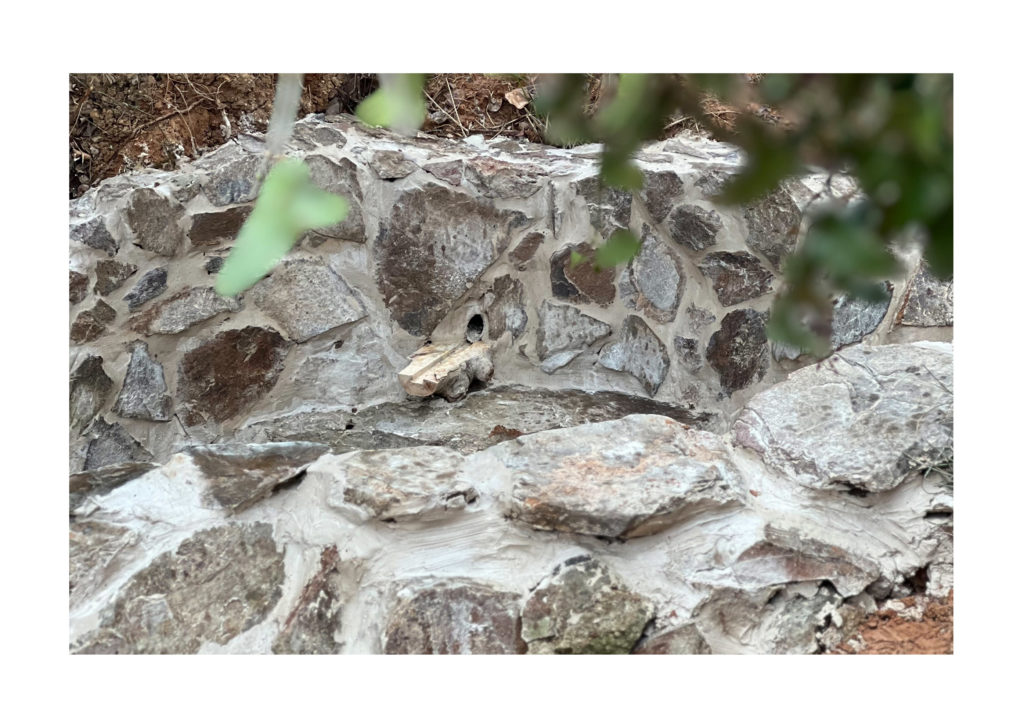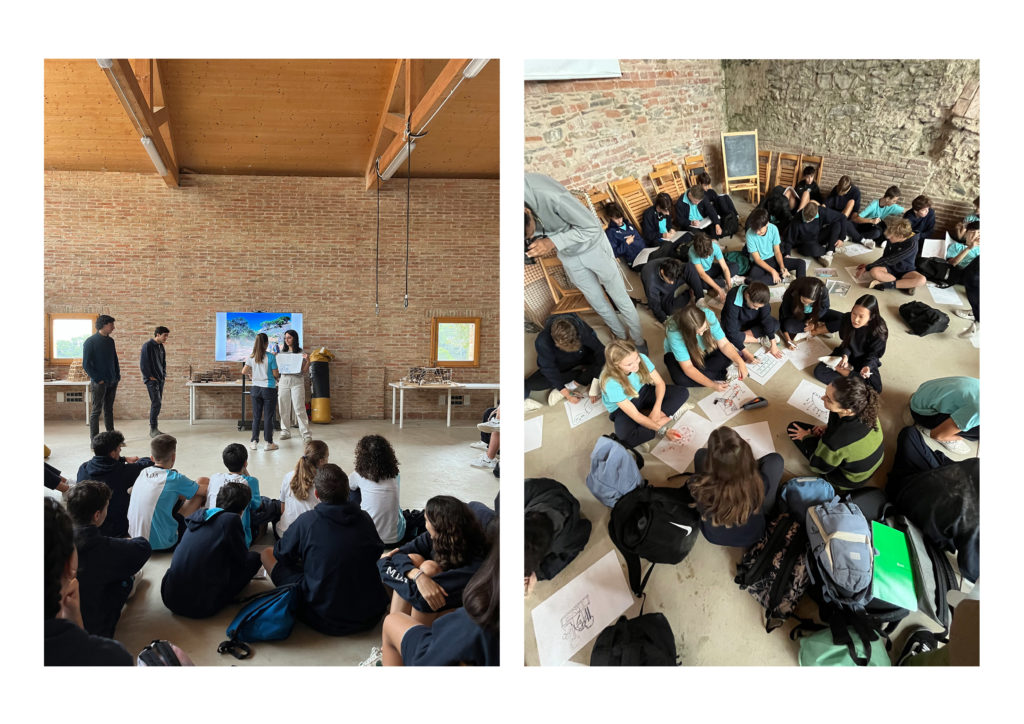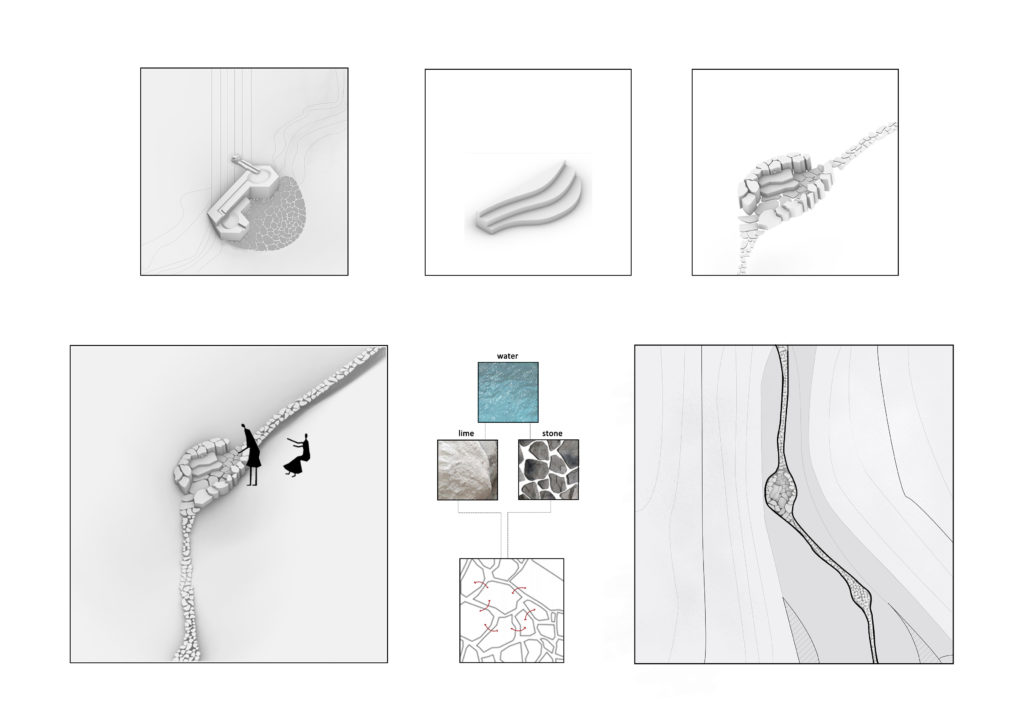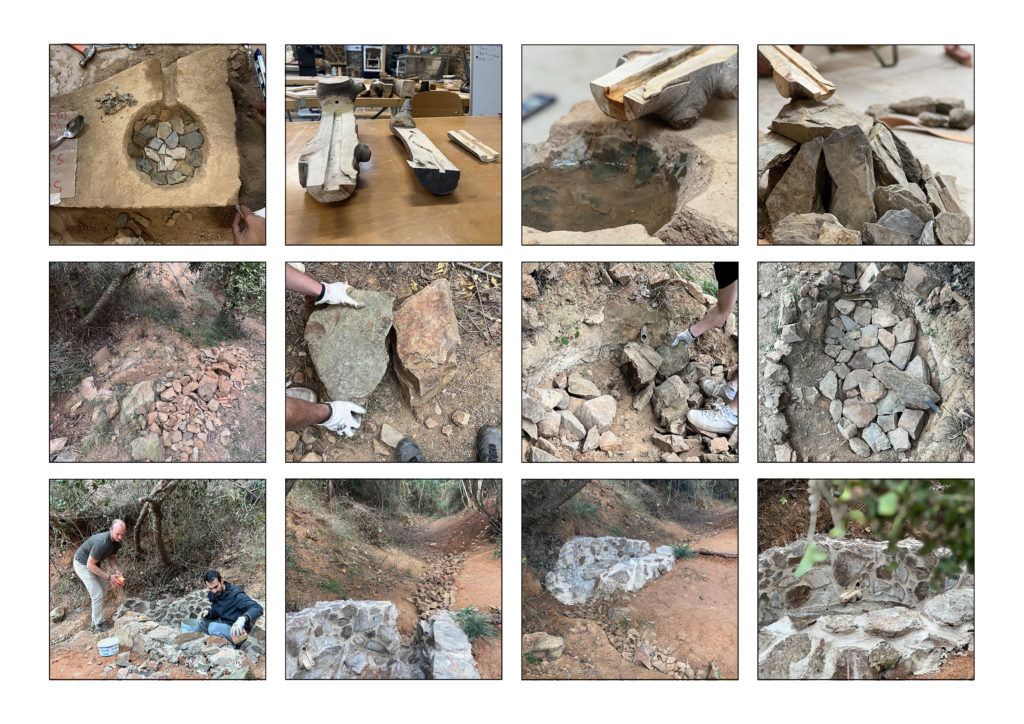BRIEF
This past fall, our Collaborative Design Studio class joined forces to bring a new life to an abandoned area. We had the unique opportunity to work on a project commissioned by the New European Bauhaus – a mission to connect the city to nature. Our assignment was located in the Font Del Goss neighborhood near Barcelona, adjacent to the beautiful Collserola Natural Park.
On our initial site walks, we were inspired by the beauty of the land. There were a few existing trees, and a small valley leading uphill where a previous ‘fountain’ was once located. After conducting more research, we discovered this spot had formerly been a source of water from a natural spring, much like the many others found in the Collserola Park.

Design Process
To further our design inspiration, we reached out to three different student groups from local schools and held a drawing workshop to generate ideas of what this place could become. Through our collective brainstorming, we were able to come up with some creative solutions to bring new life to the area.

With our increased presence at the site, we saw an opportunity to integrate the existing streambed and watershed of the small valley with the former fountain area. This was our chance to combine the human-made environment (the city) with natural processes (nature) – a key theme of the New European Bauhaus. Additionally, we worked with the erosion control team to improve the filtration of groundwater into the clay-dominant soil. This would give plants and species a better chance of inhabiting the area and enhance biodiversity.

Prototypes and Final Install
To gain a better understanding of stone arrangements and surfaces, we practiced different versions of dry-set techniques with temporary stones. We found that finding the tightest fit often required rotating stones in all directions until the right fit was found. And if that didn’t work, we could modify the stone with hammers to get the desired results.

The final design incorporates two large pedestal rocks and a wooden spout carved from offcuts of a local fig tree, inspired by Japanese fountain designs. To complete the terrace, we used flat large stones to complement the water flow. Finally, we mixed together lime and water to create a mortar/grout which hardened after 24-hours. This project will become a place for hikers to reflect and observe the connection between the local watershed and the city streets.

Our project will serve as a reminder of the importance of connecting nature and the city, and how nature can be a source of relaxation and contemplation. We hope that this project will inspire others to think critically about the environment and to further appreciate the beauty of the natural world.
We also hope to create a legacy of stewardship that will be carried on by the local community. By engaging with the local students and community members, we hope to foster a lasting relationship of mutual respect and understanding. This project has the potential to create a positive shift in how people view and interact with the environment, and we are excited to see the impact it will have.

